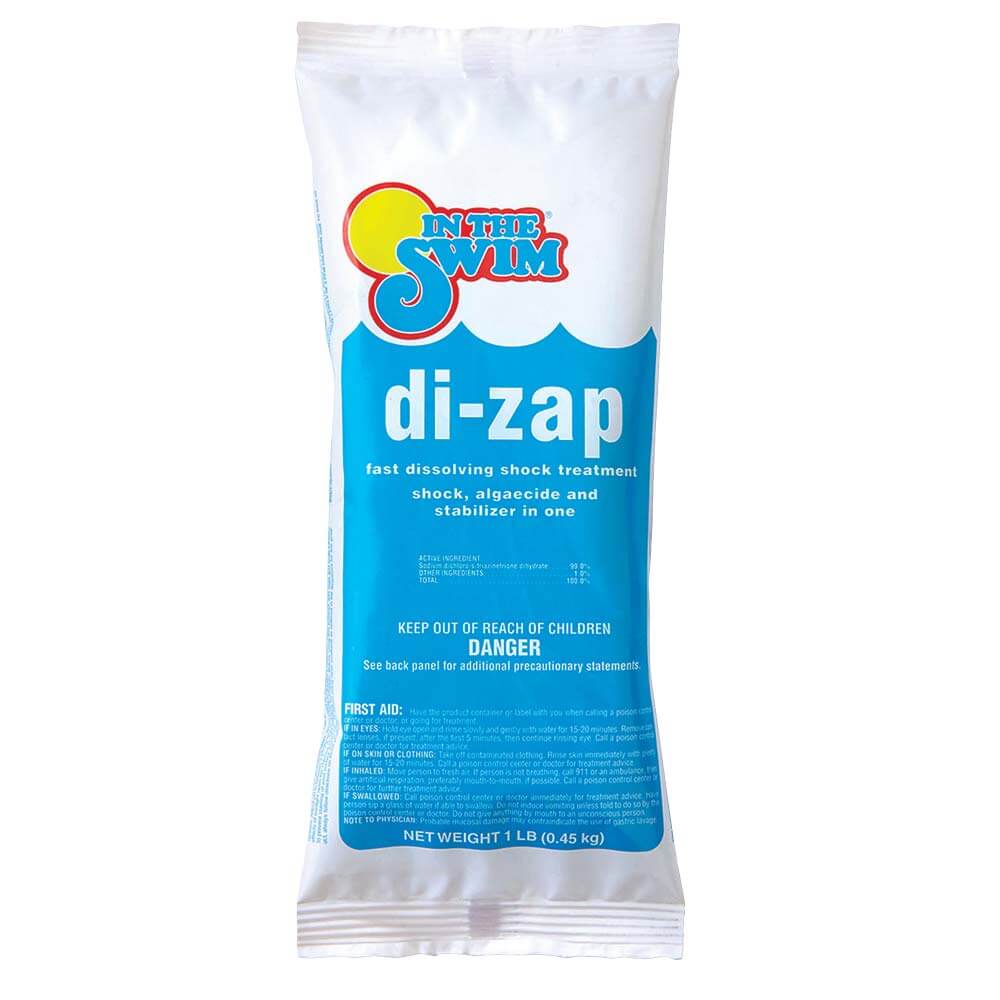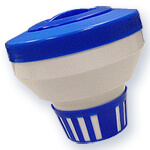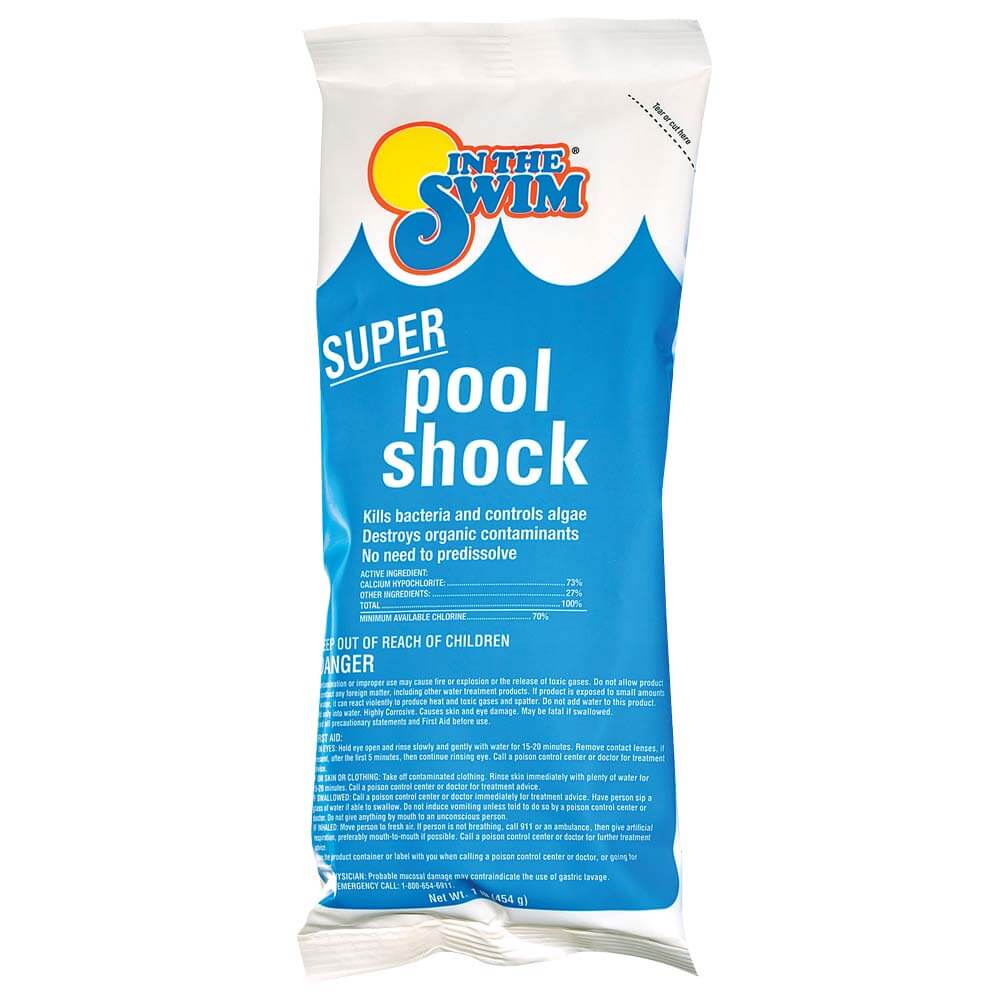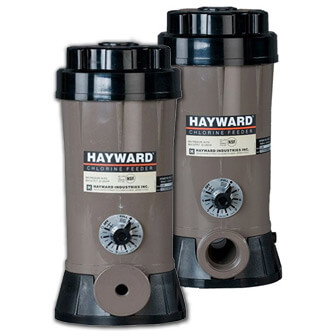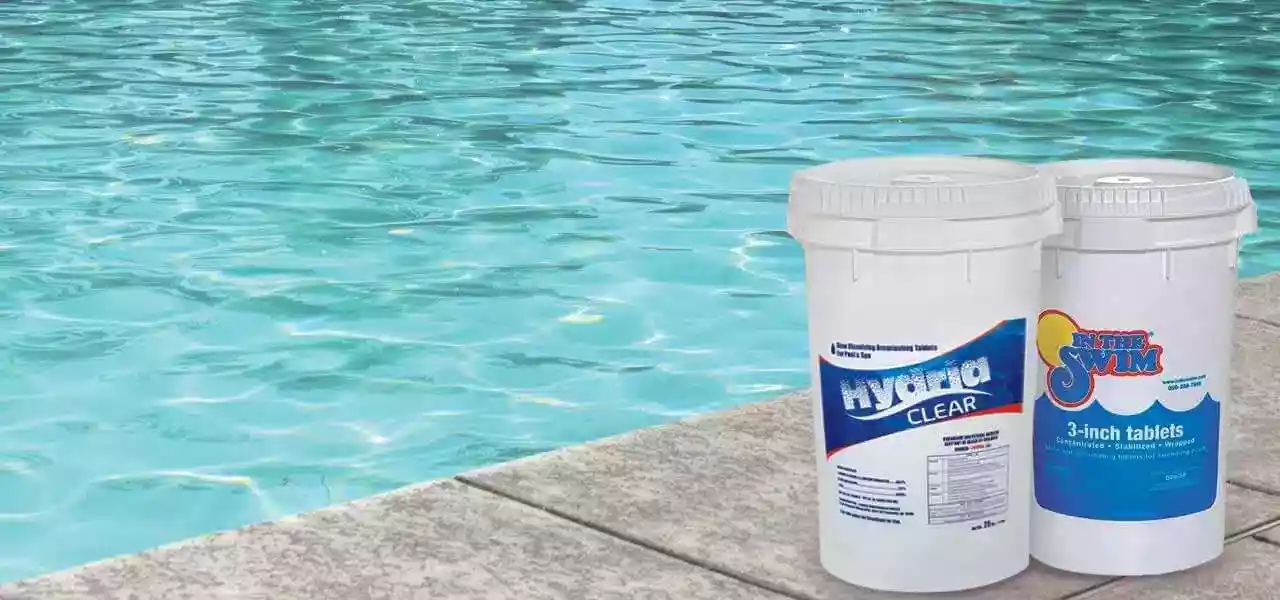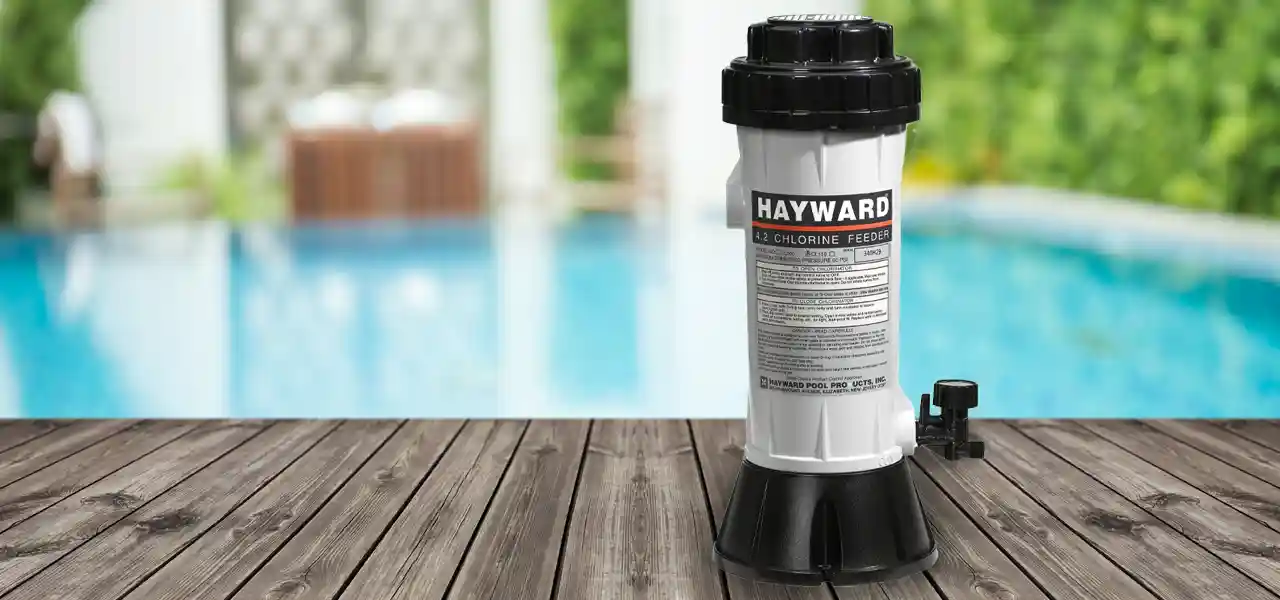Chloramines are a compound of Free Chlorine and ammonia or nitrogen. They are what give chlorine pools the infamous chlorine smell and cause red eyes. They also are very poor sanitizers and just get in the way of Free, unattached chlorine trying to do its job.
Chloramines in indoor pools is also in question for being related to respiration troubles, for aquatic staff or competitive swimmers, who breathe in a daily supply of monochloramines (NH2CL), dichloramine (NHCl2) and of most concern, trichloramines (NCl3). Indoor pools themselves can also be attacked by chloramines; oxidizing metal items around the pool, in pools without beefed up HVAC systems designed to turnover the air very rapidly and completely.
Chloramines in pools are measured by testing for Free Chlorine (FC) and Total Chlorine (TC). Subtracting Free from Total gives the result for Combined Chlorine, or chloramines. A DPD test kit allows a pool owner to quickly check for the presence of chloramines, by first testing for Free Chlorine, and then adding a third reagent, (DPD #3), to test for Total Chlorine. If the test sample gets darker at all, that indicates the presence of combined chlorine (chloramines). An FAS-DPD test kit is the most accurate way to measure chloramines, using a titration method.
When the level of chloramines is 0.3 ppm or higher, the standard practice is to effectively shock the pool to a a high enough level of free chlorine, 10-20x the amount of chloramines – to break apart the chloramine bonds. This is one of the best (and only) way to remove chloramines in swimming pools.
But – did you know that chloramines are also a problem in other applications? For instance, chloramines must be removed from many waters used in hospitals, for dialysis and other sterile water needs. Pharmaceutical and compounding operations also require completely dechlorinated water. It’s also a concern to brewmasters, whom want to avoid a bad taste in their beer by purifying the water used for brewing beer. In hydroponic farming, chloramines can stunt plant growth and for fish ponds or aquariums filled with tap water, chloramines can harm aquatic creatures.
7 Ways to Remove Chloramines
- Ultra-Violet Light: UV systems are in the beginning phases of being used for pool water disinfection, but has been used for decades in the pharmaceutical industries, beverage and for dialysis procedures. UV light of a certain wavelength will kill bacteria and other pathogens, and at a certain intensity and length of exposure, will break apart chloramine compounds.
- Super-Chlorination: With a stable pH on the low side (7.2-ish), adding enough fast dissolving chlorine to reach approximately 10 ppm will destroy most chloramines in the pool water. The very high level of Free Chlorine in the water can break the ammonia-chlorine bonds, at which point the ammonia or nitrogen will gas off the surface of the pool.
- Ascorbic Acid: Otherwise known as Vitamin C, ascorbic acid or sodium ascorbate will neutralize both chlorine and chloramines. A large amount would be needed to properly treat most pools, and this would drop the pH considerably at the same time. Stain Free is a popular pool stain remover from Natural Chemistry, but may be too costly to use for chloramine removal.
- Sodium Thiosulfate: A chlorine remover used to dechlorinate waste water and aquarium water, drinking water for certain zoo animals, or for pools that have been accidentally over-chlorinated. Sodium Thiosulfate uses reductive dechlorination to remove free chlorine and also knocks out the chloramine molecules at the same time.
- Carbon Filtration: Using series of granular activated carbon can remove chloramines, although the use of catalytic carbon seems to be favored now for larger industrial applications.
- Campden Tablets: Home brewers often use tablets of potassium metabisulfite as a reducing agent to remove chloramines from brewing water, which can alter the taste of the product.
- Boiling: And finally, boiling water will remove chloramines, but it takes a long time. Boiling 10 gallons of water will remove Free Chlorine in under two hours, but it takes over 24 hours to remove chloramines.
So then, for pools and spas – the preferred method of chloramine removal is still good ol’ pool shock. When shocking to remove chloramines, be sure to have a low (7.2-ish) pH level, and to hit it hard, with about 15x the amount of measured chloramines – to reach what’s called the Breakpoint Chlorination threshold, for complete oxidation.

